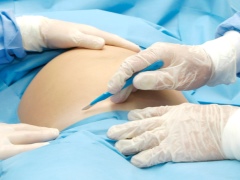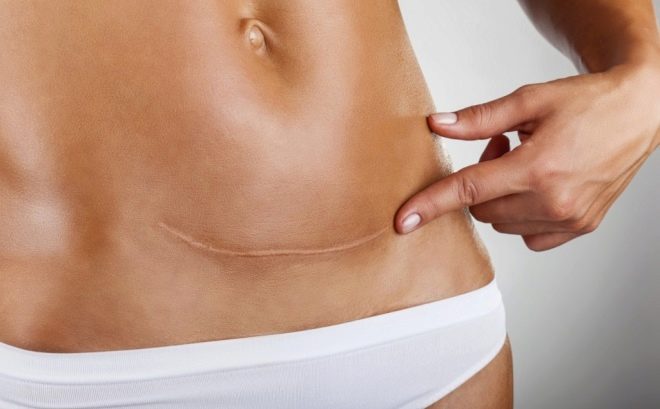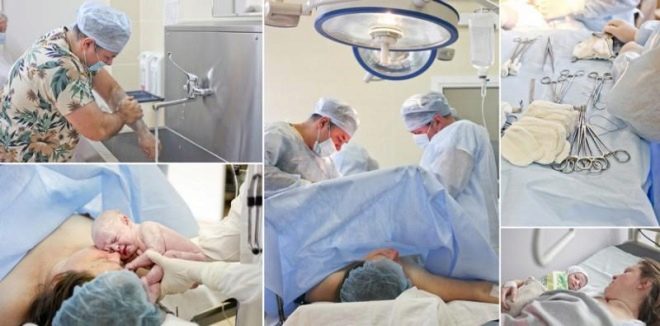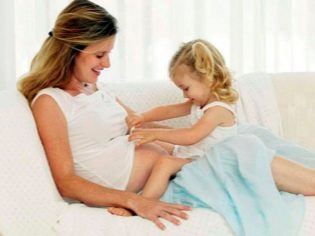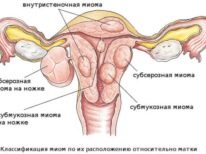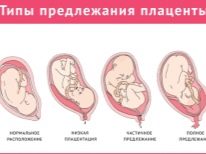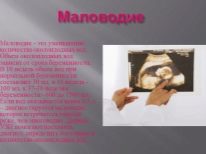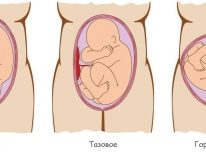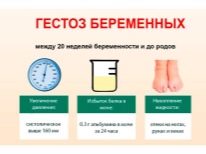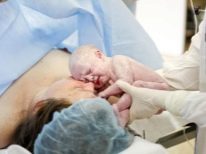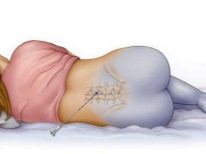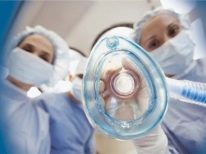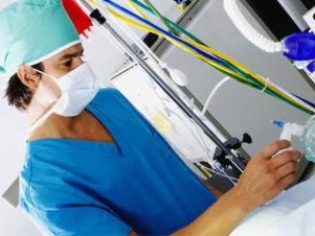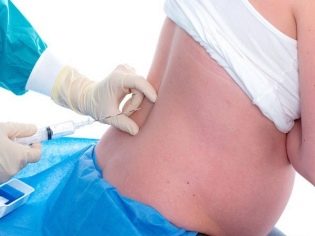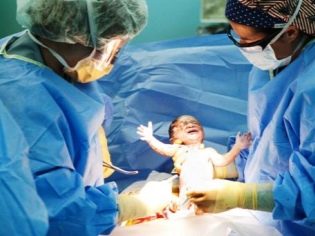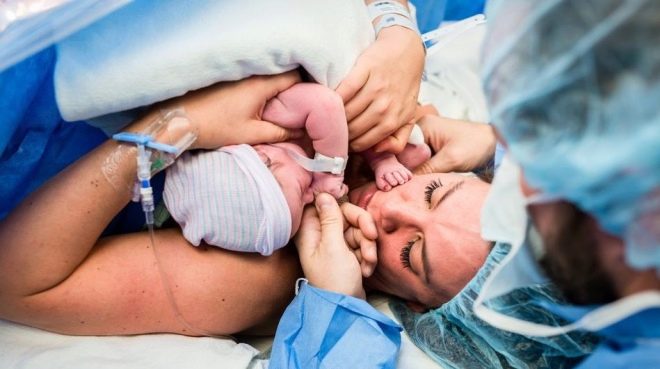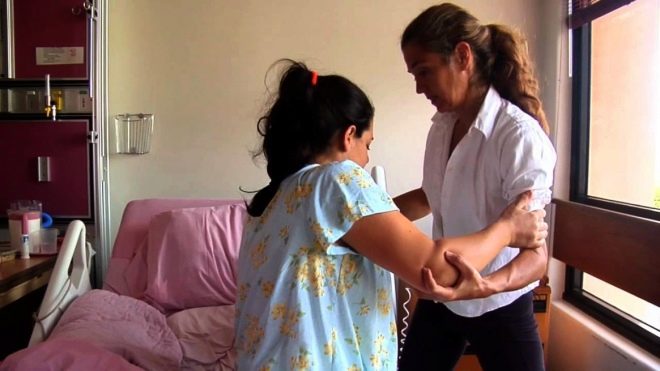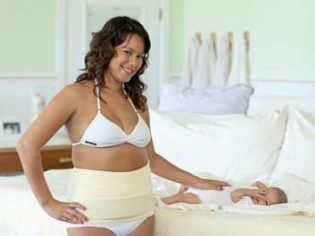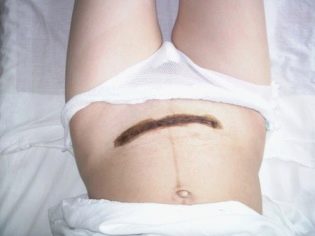Recovery after cesarean section
Childbirth does not always occur naturally. Sometimes for a baby and his mother are much safer than a caesarean section. Disputes about the care of obstetric care are going all over the world. On the one hand, a caesarean section is safer for the mother and fetus, but on the other - it has its drawbacks, the main of which can rightly be considered a longer recovery period after the operation. In this article, we will tell how to quickly recover from a cesarean section, how to preserve reproductive health and plan a new pregnancy.
About surgical childbirth
Caesarean section has an ancient and rich history. Its Latin name translates as: caesarea "royal" and sectio "cut". The royal section was practiced in antiquity, but mostly as an operation of despair. That is, the dissection of the abdominal wall and uterus was performed only when it was obvious that the woman could no longer be saved, but it was still possible to save the baby.
In France in the 16th century, the royal court physician Ambroise Pare repeatedly tried to operate on living women, whose birth was difficult, but the result was always fatal for women in labor. Three more centuries the surgeons made the same mistake - they did not sew the uterus, hoping that it would drag on itself. As a result, patients died in 100% of cases.
Only at the end of the XIX century, women in 20% of cases began to survive, because doctors together with the baby removed the uterus. Only in the last century, doctors have guessed that saving a woman’s life is possible if the uterus is sewn up after dissection. Then antibiotics appeared, and women began to survive after surgery in most cases.
Today, the quality of anesthesia, suture material, the use of antibiotics and reducing drugs made it possible not only the successful survival of both the mother and the fetus as a result of cesarean section, but also repeated motherhood, because the uterus remains in place, ovarian function does not suffer, which means that a woman can conceive and bear the child again.
Today, operations are performed as many times as necessary, so women who have been given one caesarean section are fully capable of becoming mothers of two, and three, and four or more babies, if there is a corresponding desire. But in many respects the prospects depend on how the surgical intervention was performed and how the recovery period turned out.
Technique and how to numb?
Caesarean section can be planned and emergency. The first is carried out according to medical indications, if even during the carrying of the baby it becomes obvious that independent delivery is either impossible or very risky and can lead to serious consequences for the infant and his mother. These indications include:
- large or giant baby with a narrow pelvis;
- lack of water;
- placenta previa, in which the "children's place" closes the inner pharynx fully or partially;
- tumors in the uterus;
- the probability of rupture of the uterus (due to the presence of scar from previous operations);
- improper presentation of the fetus (the child is sitting or lying transversely);
- genital herpes in the mother;
- multiple pregnancy (in some cases);
- severe forms of preeclampsia;
- heart disease and blood vessels in women, renal failure, myopia and retinal detachment in history.
In a planned operation, a woman is hospitalized in advance to prevent spontaneous onset of labor. This usually occurs on a period of 38-39 weeks, with repeated COP - 37-38 weeks. The date of childbirth is determined by the woman herself, collectively with the doctor, before the operation all the necessary tests are carried out and the method of anesthesia is chosen.
In most cases, today in Russia, caesarean is performed with spinal anesthesia (epidural anesthesia), in which anesthetic is injected into the spinal canal. The lower part of the body loses sensitivity, but the woman remains in full consciousness and can “be present” with the doctors at the birth of her own child, see him immediately, touch him, usually the baby is also applied to the breast in the labor room.
General (endotracheal) anesthesia deprives a woman of the opportunity to hear, see and evaluate what is happening. She is in a deep sleep during surgery. An encounter with a child usually occurs within a few hours after the operation, when the mother finally recovers.
Few people know that a woman herself can choose the type of anesthesia. Doctors for the most part desperately resist and discourage the mother from general anesthesia, referring to the fact that he “takes five years of life” and the way out of it is more difficult. But at the same time, anesthesiologists often keep silent about the fact that spinal anesthesia at the slightest mistake is fraught with disability for a woman, a spinal canal injury, and the exit from epidural anesthesia is objectively no easier than an exit from general anesthesia, and the period of early recovery stretches somewhat time because the woman feels worse legs.
According to some reports, epidural anesthesia, which is literally imposed on everyone without exception, is much cheaper, and therefore there are recommendations from the Ministry of Health about its use. But also general anesthesia has its drawbacks. Therefore, only the woman herself should choose. Doctors have no right to refuse either, or in another form of anesthesia, if the patient insists.
During the operation, the doctor cuts the abdominal wall. In a planned surgery, a rifle is made horizontal in the lower uterine segment. Muscle bred to the side, make a section of the uterus and remove the child. Then the surgeon manually separates the placenta. After that, the uterus is sutured, the muscles of the peritoneum and the bladder, retracted to the side, are returned to the place, and external seams or braces are applied.
Emergency cesarean section is carried out in case of development of generic weakness at any stage of labor. If independent labor slowed down, contractions or attempts stopped, stimulation did not help, if the child showed signs of acute hypoxia and there was no time to wait, the childbirth was completed promptly.
In this case, anesthesia is usually chosen in favor of general anesthesia, and the incision can be either horizontal or vertical from top to bottom if the child needs to be reached as quickly as possible.
Advantages and disadvantages
Caesarean section allows you to save the life of the mother and child. And this is his main plus. Everything else is pretty controversial. So, the official medicine indicates such advantages:
- minimized the probability of birth trauma in a child;
- no stretching of the genital tract and injuries in a woman;
- no birth pains;
- does not develop postpartum hemorrhoids.
The downsides are:
- there is always a chance of infection in the abdominal cavity of the mother;
- the beginning of lactation proceeds more slowly;
- the presence of a scar on the uterus, which in case of insolvency will be a serious obstacle to subsequent pregnancies;
- longer recovery period;
- the lack of contact between the child and the woman’s vaginal microflora increases the likelihood of reduced immunity in the child.
Therefore, the decision on the operation is taken by the doctor. And he does this only by carefully weighing all the pros and cons for this woman.
Early postoperative period
Much of the prediction for the future depends on how the earliest postoperative period passed. Usually, a woman from the operating room is transferred to resuscitation for a few hours, she is watched as she comes out of anesthesia in a real-time condition, she is put on droppers to restore the salt mineral balance, and pain medication is injected intramuscularly as pain develops.
To reduce the uterus on the stomach put a bubble or a hot-water bottle with ice, inject reducing drugs. The fact is that the muscles of the uterus during pregnancy have grown almost 500 times, and after a natural childbirth, the female reproductive organ contracts on its own. But after a cesarean section, in which contractions as such were not observed at all, the female body needs help.
To enhance the contractile function of the uterus, the hormone oxytocin, which is administered intramuscularly, is used. With an increase in body temperature in the early postoperative period, infection is suspected by default and antibiotics are prescribed.
After 4-6 hours, if the condition of the woman is satisfactory, she is transported from the intensive care unit to the ward, where she will have to lie still for at least 6-8 hours. After that it is recommended to rise. It is believed that a longer horizontal position prevents blood flow from the genital tract and increases the likelihood of infection.
It is also recommended to attach the baby to the breast as soon as possible Even if there is still no milk in it, a few drops of colostrum will be enough for the child in the first few days.
When breastfeeding in the body of a woman's own oxytocin is produced, and therefore the smooth muscles of the uterus is reduced more actively. If the baby doesn’t have enough nutrition, it is supplemented in the pediatric ward.
In the early postoperative period, which lasts two days, the woman is not recommended to stay together with the baby, because for the safe healing of dissected tissues it is necessary to exclude the lifting of any weights, even if it is the weight of her own baby. After 1.5-2 days, a woman can independently take care of a child, provided that there are no contraindications to this either from the gynecologists or from the children's doctors, who observe the baby.
In the first days after surgical delivery solid food is not recommended. Twelve hours after the intervention, the woman can drink broth, jelly. After 36 hours, it is permissible to add a mush-porridge to the diet.
A strict diet is necessary in order to prevent intestinal filling and its pressure on the uterus. Until the woman’s ascent, she was recommended bladder catheterization with catheter withdrawal into the vessel.
Rehabilitation
Rehabilitation should be started as soon as possible. The recovery of the body will be faster if the woman starts moving earlier. First, it is recommended to master the turns from side to side. This should be done carefully. Some mommies are afraid of tossing and turning, believing that the stitches on the stomach will diverge. You should not be afraid of this - surgeons sew reliably, and the suture material today is many times stronger than the one that was used 20 years ago. If everything is done carefully, no discrepancy will occur.
After turns you need to re-learn to sit. To do this, one leg must be lowered from the bed from the prone position on its side. Rely on the arm and gently raise your own body, without straining the abdominal muscles. If you try to rise from the supine position, you can’t avoid the pressure of the press, which will certainly bring a lot of unpleasant pain.
After the woman learns to sit, you need to gradually rise and take the first steps.Better - with support. If this is not possible, then you should definitely hold on to the headboard, behind the wall, so as not to fall, since dizziness in the first days after the operation is a universal and understandable phenomenon.
For three days, women are given pain killers, so the process of gaining freedom of movement will not be so painful and difficult if everything is done correctly.
On the second day, you can start doing restorative medical gymnastics, which includes:
- circular stroking of the abdomen with an open hand clockwise;
- light rubbing of the waist in a downward direction;
- breathing exercises (deep breaths and slow, prolonged exhalations with the rise of the chest);
- similar breathing exercises, but with bloating of the abdomen;
- rotation of the feet in a circle;
- cough (seam area supported by palm).
Starting from the 4th day after the operation, a woman can go to the common table, that is, eat everything that others eat, but products that stimulate the production of intestinal gases should be avoided. Swelling of the intestine now takes a lot of discomfort and will harm the condition of the uterus.
After discharge
After natural childbirth, women are usually discharged home on the third day, if there are no complications. After a cesarean section, a woman will be able to go home with the baby no earlier than the fifth day, and even then, provided that she has an early rehabilitation period without features.
The fact of discharge does not mean that the woman has returned to a healthy state. Rehabilitation after CS is long and laborious, it will take a long time to recover.
Relatives should take care that all the housework related to cleaning and cooking for at least the first week is done without the participation of the newly made mother. She can not bend, bend down, squat, lift any weight. Obstetricians like to compare the weight of permitted weights with a bowl of soup. You can lift a plate with food, anything that is heavier is impossible.
Relatives should also take care of the child. All manipulations with the baby, requiring bends, lifting the baby in her arms, in the first two weeks for a woman it is better to exclude. To feed the baby mom must pass on other people. It is better to feed the baby to a woman in a lying or half-sitting position with support on pillows.
If there are no relatives and there is no one to ask for help, do not despair. You need to ask friends or neighbors to properly organize the conditions for self-care. The bottom of the crib should be raised to a maximum height, for changing, you need to use the table. The bath should be installed on an elevation in order not to bend down and strain the abdomen.
To normalize lactation, a woman needs to eat fully, focusing on protein foods. Milk may arrive slowly, it is quite normal after a cesarean section, but it will definitely appear, no need to worry.
An important task of the first days at home is the normalization of the bowels. It is with this that the most difficulty usually arises. Women are afraid of straining, they become constipated. To push and not need. If it is impossible to go to the toilet in large, you can use laxatives in candles, for example, Bisacodyl or microclysters. They allow you to quickly restore the chair, but should not be abused laxatives. They are suitable for use 1-2 times, then you need to try to go to the toilet yourself. Ideally, the chair after the COP should be daily.
The seams need to be processed daily. Better 1-2 times a day. Best of all, if someone from relatives does it. If the woman is alone, then it can be processed in front of a mirror. Zelenka is used for this, since the Brilliant Green solution is the best prevention of staphylococcal infection — the most dangerous bacterial infection.Before smearing the area around the seams with green paint, you can lightly water the connective tissue with hydrogen peroxide, especially if there are moist areas. If the seam does not get wet, it is dry, then the bandage should not be worn - this way it will heal faster.
If there are signs of moisture, after treatment, apply dry sterile gauze in several layers and fix it with a bactericidal plaster along the edges. Before removing the seams, water should be avoided.
After 5-7 days after discharge, the woman needs to visit the antenatal clinic at the place of residence. Give to the doctor who conducted the pregnancy, discharge documents from the maternity hospital, and also remove the stitches. It is not painful, not scary. After removing the stitches, the woman continues to process the scar for several days at home without applying a gauze bandage.
Restoring the seam usually does not cause problems. Today, surgeons are trying to make cosmetic stitches, which in six months are almost not visible even in a bathing suit. Primary suture healing usually goes away within 3 weeks. Unobtrusive, it becomes during the year.
What not to do?
Restrictions after cesarean section apply to many areas of life of a young mother During the period of recovery of the body, she is prohibited from excessive exercise, stress, weight lifting. If more, then a reminder of prohibited actions looks like.
- Sex is prohibited for a period of 2 months. Start living sex life a woman can only after the lochia stops - bleeding from the genitals. From the same time a woman should apply barrier methods of contraception until the menstrual cycle is restored. After that, together with the gynecologist, you can choose any convenient method of birth control.
- You can not take a bath, swim in the pool or ponds. The ban applies to the first two months after surgery. While the uterus and external sutures are healing, the risk of infection remains. You can swim only in the shower. It is forbidden to visit the solarium, baths and saunas.
- You can not lift weights. In the first weeks after surgical manipulations, weights mean everything that is heavier than a glass of tea or a bowl of soup, and within six months after the operation - everything that is heavier than 3-4 kilograms. Due to physical exertion and weight lifting during the recovery period, an insolvent uterus scar can form.
- You can not ignore the symptoms of infection or early failure of the suture. These include an increase in temperature to 38.0-39.0 degrees, suppuration in the suture area, the appearance of bleeding from the genitals, increased blood discharge, the appearance of purulent discharge with an unpleasant smell from the genital tract.
- You can not do gymnastics and exercise. The ban on gymnastics as a whole is imposed for 2 months after the CS, and press exercises to bring a woman into shape should be started no earlier than 6-7 months after the operation. After the second COP, it is not recommended to start such exercises in the first 9 months after giving birth, since the scar area is thinner in them.
When can you get pregnant after a cop?
Doctors advise women after a cesarean section for at least 2 years to refrain from new pregnancies. This recommendation is well founded. That is how much time is required for full recovery of the uterus after the incision. The scar, of course, does not disappear anywhere, but during the first two years it is too thin, since the formation of connective tissue is still underway. After a 5-6 year break, the scar becomes coarse, and this is also not very good for carrying a pregnancy. Therefore, to begin planning should be no earlier than two years.
The menstrual cycle after the COP is restored on average in 2-3 months, but it should be remembered that its recovery may take a longer time - up to a year. Therefore, there is an urgent need to carefully protect themselves.Pregnancy, which occurred earlier than 2 years have passed, increases the risk of uterine rupture along the scar even during the period when the baby is born. Also, the scar can cause miscarriage, the formation of fetal malformations, placental insufficiency, as well as the total growing of a “baby seat” in the area of the scar, if the fetus consolidates near it.
If a woman is going to become a mother, both abortions and diagnostic curettage of the uterus cavity are contraindicated, since each such intervention adversely affects the condition of the endometrium and scar tissue.
If two years have passed, and the couple decides that it is time to think about the second (third or subsequent) child, before conceiving it, you need to consult a gynecologist, do all tests, including sexually transmitted infections, and pelvic ultrasound. Special attention should be paid to the scar on the uterus. Its thickness should not be less than 2.5 mm, ideally more than 7 mm. The scar should be uniform, not have thinning and "niche".
The condition of the scar is assessed when performing hysteroscopy, hydrography, hysterography. Insolvent scar - not a sentence, in Russia there are doctors and clinics that take on the management of special risk pregnancies with thin and heterogeneous uterine scars.
A well-founded scar after the first cesarean section may be grounds for allowing a woman to have a second child on her own (at the discretion of the doctor). After two or more KS independent natural childbirth is not allowed. Each subsequent pregnancy is resolved by caesarean section.
Reviews
According to reviews of women who have undergone the operation of the COP, the most difficulties in the first days arise with coughing, laughing and going to the toilet. Also, many note the numbness of the skin of the abdomen, which eventually passes. Some people complain of pain in the seam area for 3-4 months, while most of the discomfort disappears within a few weeks. The stomach is "drawn in", according to reviews, after six months.
Complaints of a hard way out of anesthesia have recently been encountered infrequently, since modern anesthetics are used for pain relief.
The recovery time for all women is different. Much depends on the adaptive characteristics of the organism.
On the features of recovery after cesarean section, see the following video.
